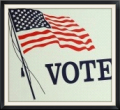Campus Card Business Forecast
2010
Published by
Robert C. Huber, CMC, CPCM
Vendor Independent
Campus Card Business Consultants
Campus Card Business Forecast
2010
Prediction #1 – Contactless Becomes Preferred Campus Card
Technology
After magnetic stripes have dominated campus card systems for 40 years, advanced "contactless" smart chip technology (high frequency 13.56 MHz) rapidly ascends as the preferred identity and reader technology due to its high data security, read/write storage capability, non‑mechanical reader design, expansion scalability, extended reader life, increased communications security, and rapid customer appeal with "Tap & Go" functionality via a variety of patron credentials (i.e., cards, badges, keyfobs, tags).
Prediction #2 – Wireless & Contactless Propel Door Access Expansion
Parallel contactless and wireless innovations surpass early low frequency (125 kHz) "prox" technology with advanced data security, faster installations, reduced wiring and maintenance costs, 2x reader life (non‑mechanical design), emergence of multiple host shared readers, PoE (Power over Ethernet), phase out of building controllers and costly home run wiring, and increased web-assisted facility and perimeter security.
Prediction #3 – Merchant Programs Achieve Core Application Status
Increased consumer mobility, student proclivity for endless variety and convenience, incremental revenue-sharing opportunities and outsourced merchant management services, will escalate merchant applications as an expected element of all diversified and contemporary campus card programs.
Prediction #4 – Virtual, Virtual, Virtual
Except for initial security verification, most campus card patron management services will increasingly be customer managed via 24/7 on-line and imaginative kiosk devices.
Prediction #5 – Social Sizzle … Instead Of Substance?
The failure to preserve and promote brand continuity, obscured by the excessive use of on‑line graphics, without an applied correlation to a structured, academic and strategic marketing plan, may result in many tactic-based campus card marketing programs that fail to achieve enduring and affirmative results expected by administrators.
Prediction #6 – Which Credential Would You Like Today?
One of the benefits of contactless technology (13.56 MHz), actually pioneered with low frequency contactless, is the convenience of several simultaneous credentials per patron (i.e., cards, badges, keyfobs, tags) and already built-in to most campus card systems.
Prediction #7 – Biometric Access Applications Go To Graduate School
A pronounced increase of contactless memory-enabled patron credentials and concurrent development of third-party biometric readers, fused with government research site requirements, healthcare privacy, costly laboratory equipment, sensitive animal research labs, and protection of vital data centers will see a rapid increase in biometric facilitated multi-factor authentication facility access.
Prediction #8 – Community Colleges Become Major League Market
Potential new off-campus merchant revenues, increased campus safety and identification issues with a highly fluctuating population, and verified access to buildings, doors, labs, restricted areas, and parking facilities in a more traditional open public campus environment will drive accelerated interest and corresponding government funding assistance for campus card systems at community colleges throughout the United States.
Prediction #9 – Shared, Leased & Hosted Systems Gain Prominence
The increase of national server farms and state contracted data centers for management of many administrative database and enterprise resource planning systems will encourage CIO's at institutions to recommend use of increased vendor hosted services for labor, economies of scale, and harbored resources strategies.
Prediction #10 – Vendor Shuffling In The Cards
The retirement of long-term industry professionals, increased financial scrutiny by corporate boards, and the ever increasing charisma of the campus card industry will inevitably shift market share and vendor ownership of campus card industry vendors on a continual and evolutionary basis.
► View ● Print ● Download ● Share
RHA_2018 Campus Card Business Forecast.p[...]
Adobe Acrobat document [69.7 KB]
► View ● Print ● Download ● Share
RHA_FAST FACTS.pdf
Adobe Acrobat document [829.5 KB]
Publisher
Robert C. Huber, CMC, CPCM, President & Senior Consultant of Robert Huber Associates, is a "Vendor Independent" Campus Card Business Consultant, certified business and marketing consultant, card technology expert, implementation strategist, Hall of Fame recipient, college business instructor, publisher of the "Campus Card Business Forecast", author, entrepreneur, visionary, trusted media resource and frequent speaker at business conferences throughout North America.
Since developing the "All-Campus Card" concept in 1985, he has implemented over 200 debit card, door and parking access control, meal plan, food production, and point-of-sale systems at over 200 colleges, universities, hospitals and corporations.
Innovations
Robert C. Huber, CMC, CPCM, has been an industry pioneer, historian, forecaster, media resource, and campus card industry leader since 1982 and directly responsible for many campus card industry innovations:
1982 - Introduction of the first campus cards with High Coercivity magnetic stripes (non-eraseable).
1985 - Development of the "All-Campus Card" concept at Duke University.
1986 - Development and issuance of more durable "4-Year Campus Cards".
1990 - Installation of the first "smart card" credentials and systems on three college campuses (simultaneously).
Vendor Independent
Campus Card Business Consultants























































































